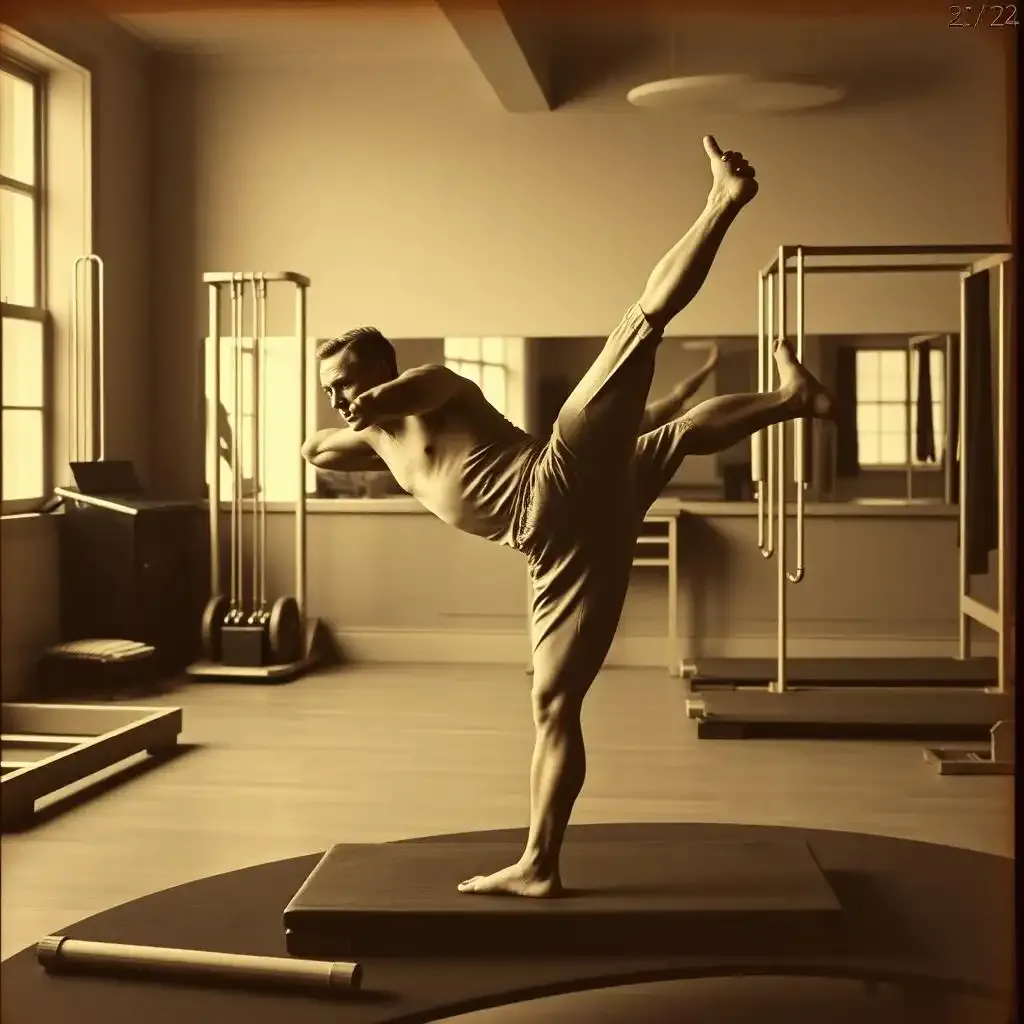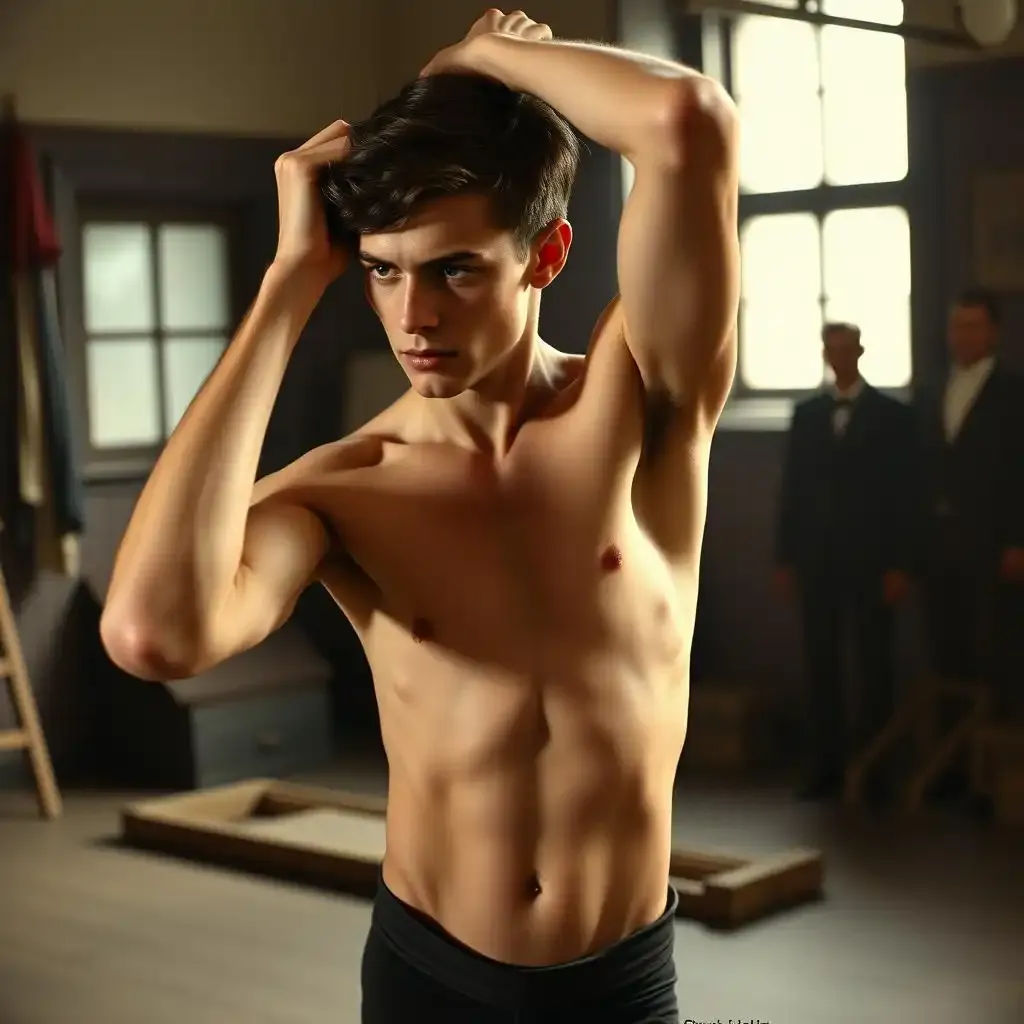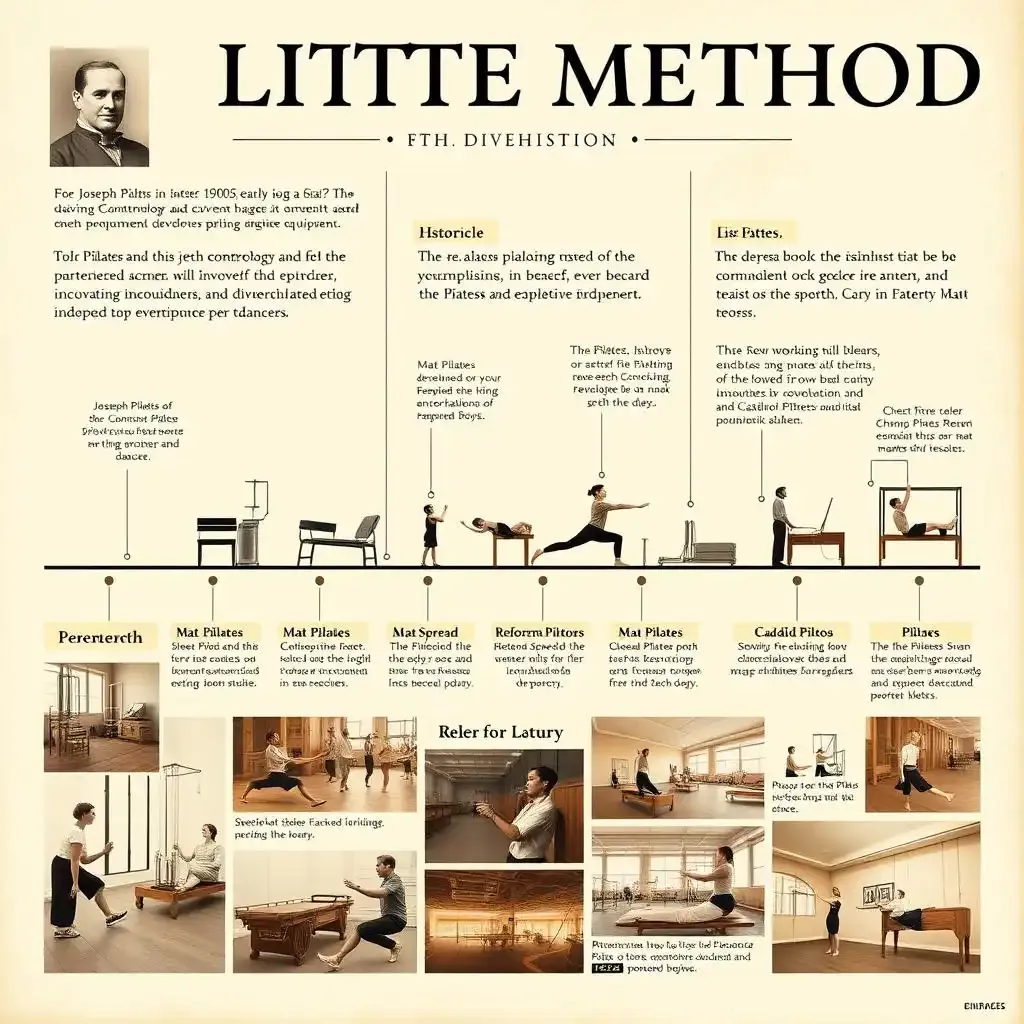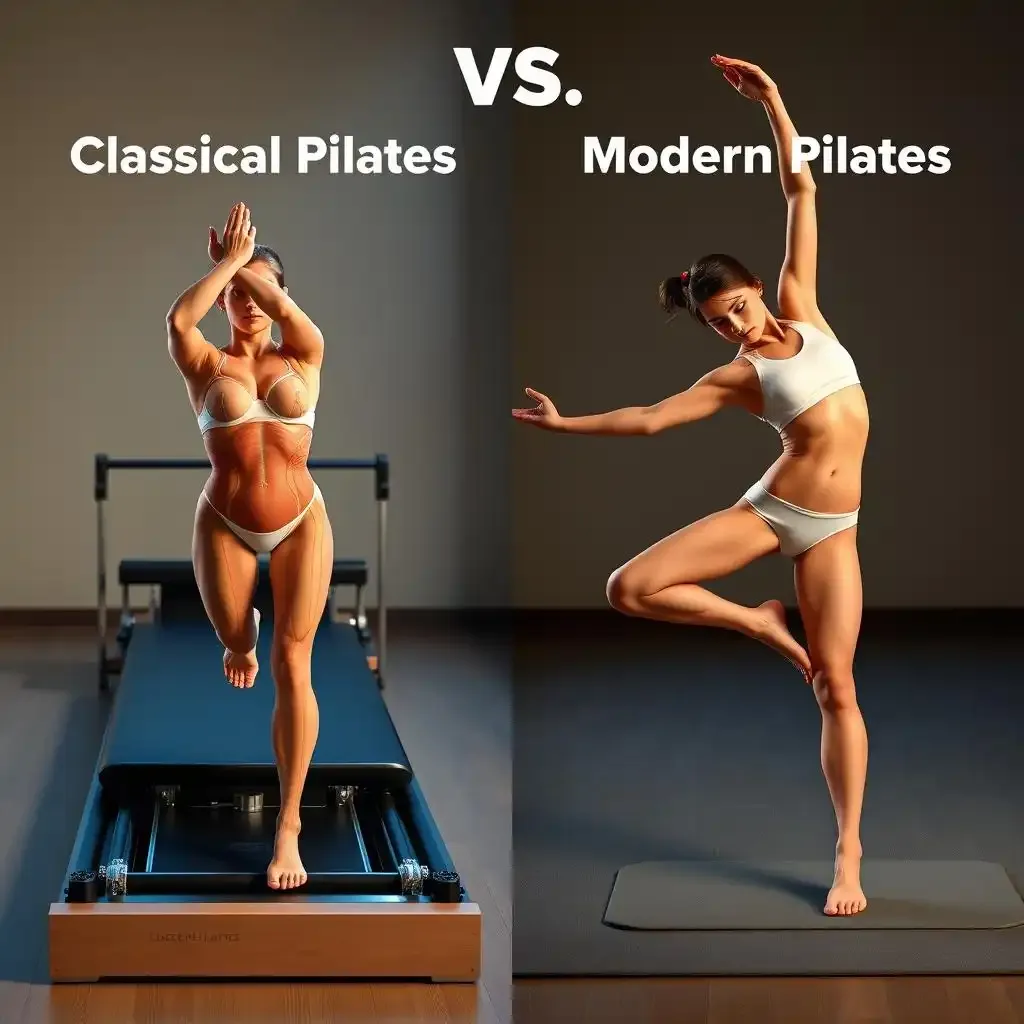Table of Contents
Pilates, a name synonymous with fitness and body conditioning, has its roots in the early 20th century. But how did this method come to be? Who was Joseph Pilates, and what inspired him to create a new approach to exercise? In this article, we'll examine into the origins of Pilates, tracing its evolution from a personal quest for health to a worldwide fitness phenomenon. Whether you're a Pilates enthusiast or simply curious about its history, this trip through time will provide you with a deeper understanding of how Pilates came to be what it is today. So, let's get started on this enlightening exploration of pilates origin with kizworld.
Key Takeaway | Details |
|---|---|
Founder | Joseph Hubertus Pilates |
Birthplace | Monchengladbach, Germany |
Year of Birth | 1883 |
Original Name | "Contrology" |
First Popularization | 1924 in America |
Generic Term Designation | 2000 Federal District Court Decision |
Current Status | Global fitness phenomenon |
Open Up The Secret: The Unique Pilates Origin Story
The Early Life of Joseph Pilates
The Early Life Of Joseph Pilates
Joseph Pilates was born in Monchengladbach, Germany, in 1883, a city in the North Rhine-Westphalia region. His early life was marked by a frail physique, and he suffered from various ailments, including asthma. However, instead of letting these challenges hold him back, Joseph chose to tackle them head-on.
He began studying various exercise regimens, including bodybuilding, yoga, and gymnastics. Joseph was determined to create a strong and flexible body, and his hard work paid off. By the time he was in his late teens, Joseph had developed an impressive physique, and his struggles with asthma and other ailments had significantly improved. This transformation had a profound impact on Joseph's approach to exercise, and he eventually created his unique method, known as the Pilates method.
Joseph's passion for fitness was matched only by his passion for learning. He studied various subjects, including anatomy, physiology, and psychology, which greatly influenced his work in the world of exercise. This rich foundation in knowledge and personal experience helped shape the principles that would later guide the Pilates method.
Exercise Regimen | Benefits |
|---|---|
Bodybuilding | Strength and muscle development |
Yoga | Flexibility, balance, and relaxation |
Gymnastics | Coordination, agility, and overall physical conditioning |
Pilates' Progression to America
World War I dramatically changed the course of Joseph Pilates' life. While in England, he was interned as an "enemy alien" along with other German nationals. It was during this period that he began to refine his exercise system, working with fellow internees. He used springs attached to hospital beds to help rehabilitate injured soldiers, laying the groundwork for some of the Pilates equipment we know today, such as the Cadillac and Reformer. This period of confinement, though challenging, became a crucible for the development of his method.
After the war, Joseph returned to Germany but ultimately decided to emigrate to the United States in 1926. During his voyage to America, he met his future wife, Clara. Together, they established the first Pilates studio in New York City, catering primarily to dancers and athletes. Joseph's method, initially known as "Contrology," began to gain recognition for its ability to improve strength, flexibility, and posture. His studio became a hub for those seeking a unique approach to body conditioning, attracting a devoted following that helped spread the word about Pilates and its benefits. Check out our post on for more details. We also have a great post about Pilates in Atlanta if you're interested in learning more about studios in that area.
Event | Location | Significance |
|---|---|---|
Internment | England | Refinement of exercise system, early equipment development |
Emigration | United States | Establishment of first Pilates studio |
The Evolution of Pilates Method
The Evolution Of Pilates Method
From Contrology to Global Phenomenon
So, imagine this: It's the early 1900s, and Joseph Pilates, this super-fit guy who'd battled asthma as a kid, is already a total fitness guru. He's not just doing exercises; he's *creating* them. He calls his system "Contrology"—because it's all about controlling your body with your mind. Think of it like a superpower! He's using springs from hospital beds to make this amazing equipment that helps people get stronger and more flexible. It's pretty inventive, right? He's basically building the foundation for all those fancy Pilates machines you see at the gym today. He wasn't just making exercises, he was building a whole philosophy of movement and well-being!
His Contrology method really starts to take off in the 1920s in New York City. Dancers, especially, loved it – think of it as the ultimate body-sculpting secret weapon! Want to know more about the amazing exercises that make up the Pilates method? Check out our post on Pilates workout for a detailed breakdown. It's like a total body makeover, but way more fun than any makeover show you've ever seen!
- Strength
- Flexibility
- Improved Posture
Pilates Spreads its Wings
After Joseph Pilates passed away, his method didn't just disappear. His wife, Clara, kept the Pilates flame burning, teaching and training others. Then, boom! Pilates exploded in popularity, spreading like wildfire across the globe. It wasn't just about the original exercises anymore – people started adding their own twists and turns, creating different styles and approaches. You'll find Pilates studios everywhere from small towns to big cities, each with its own unique spin. Think of it like a delicious pizza – the basic recipe is the same, but you can add all sorts of toppings to make it your own!
Today, you can find all sorts of Pilates variations – from mat classes to reformer sessions to Cadillac workouts – there’s a style for everyone. Want to check out the evolution of the Pilates method in a visual way? Then take a look at our Pilates before and after photos! Some people even use Pilates machines to help them recover from injuries. It's become a whole world of its own, a testament to Joseph's original genius. It's amazing how something that started so simply has evolved into such a diverse and popular workout.
Pilates Style | Equipment | Focus |
|---|---|---|
Mat Pilates | Mat only | Bodyweight strength and control |
Reformer Pilates | Reformer machine | Resistance training and controlled movements |
Cadillac Pilates | Cadillac machine | Flexibility and range of motion |
Pilates Today: Classical vs. Modern Approaches
Pilates Today Classical Vs Modern Approaches
Joseph Pilates' original method, often called "Classical Pilates," follows a specific sequence of exercises designed to flow seamlessly from one to the next. It emphasizes control, precision, and the link between mind and body. Think of it like a carefully choreographed dance, where each movement has a purpose and builds upon the previous one. Classical Pilates often incorporates all the specialized equipment that Joseph Pilates developed, like the Reformer, Cadillac, and Wunda Chair. These apparatuses add resistance and support, allowing for a greater range of motion and a deeper challenge. Want to improve your form? Check out our tips on wall Pilates challenge. Looking for the right gear? We've got you covered with our guide to Pilates socks.
Classical Pilates instructors often undergo rigorous training to ensure they adhere to the original method's principles. They focus on proper breathing techniques, precise movements, and the smooth transition between exercises. It's like learning a traditional martial art, where the emphasis is on mastering the fundamentals before exploring more advanced techniques. This focus on precision and control makes Classical Pilates an excellent choice for those seeking to improve posture, core strength, and overall body awareness. It's not just about getting a workout; it's about cultivating a deeper understanding of how your body moves.
Classical Pilates Feature | Description |
|---|---|
Exercise Sequence | Specific, flowing order |
Emphasis | Control, precision, mind-body link |
Equipment | Often utilizes specialized Pilates apparatuses |
Instructor Training | Typically rigorous and focused on original method |
Embracing Modern Adaptations
Modern Pilates builds upon Joseph Pilates' original work, incorporating contemporary understandings of anatomy, biomechanics, and exercise science. Think of it as taking a classic recipe and adding a modern twist. While respecting the core principles of Contrology, modern Pilates often adapts exercises to suit individual needs and limitations. This makes it a more accessible form of exercise for a wider range of people, including those with injuries or physical limitations. Curious about the core principles? Our article on breaks it down. Thinking about trying Pilates in a new city? See our recommendations for .
Modern Pilates classes might incorporate elements from other disciplines, such as yoga, physical therapy, or even dance. This blending of styles creates a more dynamic and varied workout experience. It's like creating a fusion dish, taking the best elements from different cuisines to create something new and exciting. Modern Pilates often focuses on functional movement patterns, helping people move better in their everyday lives. This can be especially beneficial for athletes, people recovering from injuries, or anyone looking to improve their overall physical well-being. It's about taking the principles of Pilates and applying them to real-world situations.
- Incorporates contemporary understanding of anatomy
- Adapts exercises for individual needs
- May blend elements from other disciplines
- Focuses on functional movement patterns
Exploring the Spectrum of Pilates
Modern Pilates often uses modified equipment or variations on the classical exercises to cater to different fitness levels and goals. For example, a beginner might start with mat work before progressing to the Reformer, while someone recovering from an injury might use specialized equipment to support and challenge specific muscle groups. It's like choosing the right tool for the job, ensuring that the workout is both effective and safe. Want to explore the world of Pilates equipment? Our guide to Pilates machines has all the details. Ready to explore into a workout? Check out our guide.
Both Classical and Modern Pilates offer unique benefits. Classical Pilates provides a deep examine into the original method, emphasizing precision and control, while Modern Pilates offers greater flexibility and adaptability. It's like choosing between a vintage car and a modern sports car – both offer a thrilling ride, but with different styles and features. The best choice for you depends on your individual preferences, goals, and physical condition. Whether you prefer the structured flow of Classical Pilates or the adaptable nature of Modern Pilates, both approaches can help you improve your strength, flexibility, and overall well-being. Looking for inspiration? Our photos might just motivate you! Interested in a specific studio? See what Pilates Republic has to offer.
Approach | Benefits |
|---|---|
Classical Pilates | Precision, control, deep association to original method |
Modern Pilates | Flexibility, adaptability, caters to individual needs |
Final Thought
As we've explored the fascinating process of Joseph Pilates and the evolution of his method, it's clear that Pilates is more than just a workout; it's a testament to one man's vision and perseverance. From its humble beginnings as "Contrology" to its current status as a global fitness phenomenon, Pilates continues to inspire and transform lives. Whether you're practicing classical Pilates or one of its modern adaptations, the essence of Joseph Pilates' original philosophy remains at the core. So, the next time you roll out your mat, remember the rich history and dedication that brought Pilates to you. Thanks for joining us on this trip with Kizworld.